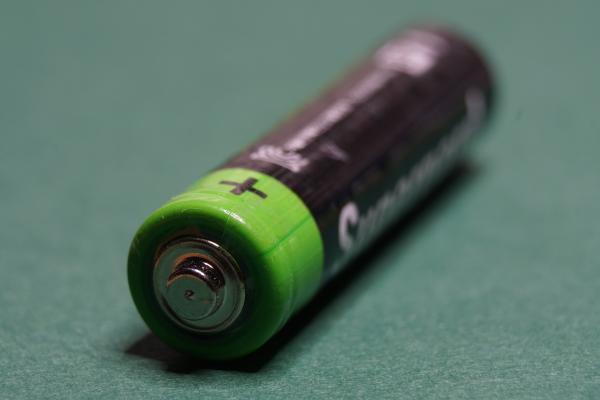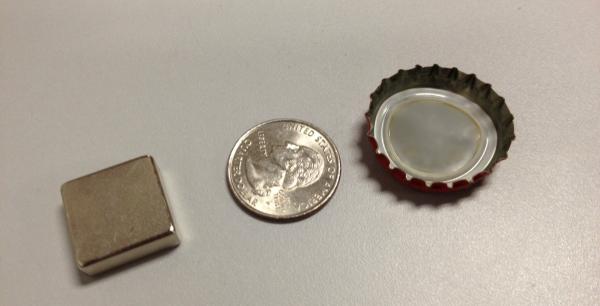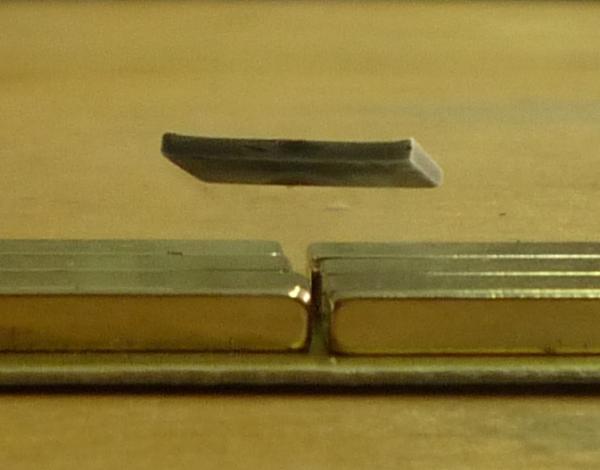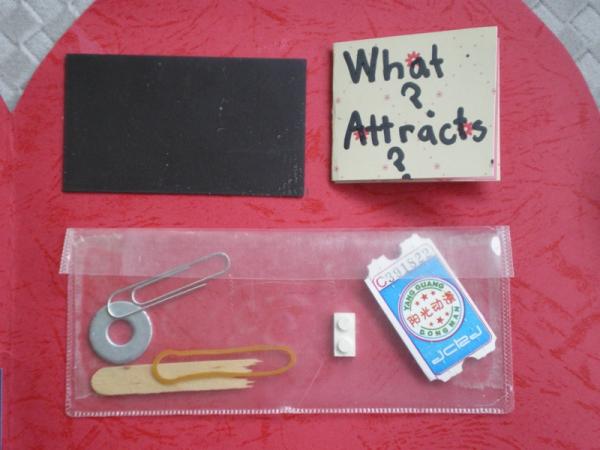Magnet Experiments
-
Make A Dancing Heart With Electromagnetism
Homopolar motors are the simplest forms of motors. They can be built with three materials, but their designs can be a little more creative. For instance, you can make spiral or heart shapes dance with the motor's energy. Since it is almost Valentine’s Day, you can try this fun science experiment that explores how electricity and magnetism come together to form electromagnetism. Continue reading → -
Top 5 Blog Posts from 2014
Last year, we answered a number of magnet questions and showcased creative DIY projects on our blog. As we enter 2015, we are taking a few minutes to reflect on the top blogs from last year. Continue reading → -
Spooky Science Experiments for Halloween
From Frankenstein to ghost hunting, science has long been referenced in Halloween stories. Although the science behind the spooky stories is sometimes flawed, we can’t help but admire the creative efforts of storytellers. Therefore, in the spirit of Halloween, we have put together some of the spookiest science experiment ideas that are perfect for teaching science while still having scary fun. Continue reading → -
Build a Levitating Model Train Track with Magnets
Maglev trains are powered by magnetic levitation technology. If you have ever heard about or ridden on one of these high speed trains, then you may already know that they hover above the track. This is because their design is based on the Meissner effect. When cooled to a super low temperature, superconducting materials like Yttrium-barium-copper-oxide enter a state of zero electrical resistance, expel magnetic fields and can levitate. You can build your own mini Maglev train and track, with a few simple materials and construction. We have outlined some steps and supplies below, however, this method differs from the Maglev train technology. Read on, and see if you can guess how this design is different. Continue reading → -
Is It Magnetic? An Experiment
Magnetism is an essential science lesson, and you can make teaching about it loads of fun with some creative tools. For a beginner, learning about the complex world of magnetism can seem a bit daunting. However, if you start with the basics and this creative experiment, it should be easier to move onto some more advanced concepts. One of the most basic magnet lessons is figuring out what is and what is not magnetic. In other words, what do magnets attract (besides other magnets)? A fun way to do this is with a magnetic test experiment. Continue reading → -
Magnet Experiments: Build a Speaker with Magnets
Can you imagine life without music? Well, without magnets it would be pretty difficult to listen to it. Did you know that magnets are inside speakers and headphones? Magnets allow us to hear the music that we love so much. You can even create your own DIY set of speakers with some magnets and learn a little bit about audio, electricity and science in the process. There are tons of variations on homemade speakers, even a Mason jar version. But, we have created a simple version for those of you that would like to try it out! Continue reading → -
Copper Tube and Neodymium Magnet Experiment Explained
In a previous blog, we completed a neodymium magnet experiment to see what happens when you drop a bar magnet into a copper tube. Spoiler alert — if you want to try the experiment for yourself first, stop reading and head to this blog. When you complete the age-old “drop a magnet down a tube” trick, you’ll notice something strange... -
Magnet Experiment: How to Make an Electromagnet
The discovery that electricity and magnetism are closely related goes as far back as the 1820s, when physicist Hans Christian Oersted demonstrated that an electrical current creates a magnetic field capable of deflecting a compass needle. Oersted’s discovery established that there is more than just one type of magnet. Continue reading → -
Magnetic Experiment and Lesson Ideas
Magnetism is all around us. It is one of the greatest scientific and natural phenomenons in the world and an important part of science and other learning curriculum. However, it can get a bit complex, so how do we teach students about magnetism without confusing or boring them? Here are a few suggestions and lessons to try to engage and introduce students to the magical world of magnets. Continue reading → -
Magnet Experiments: Iron Filings and Neodymium Magnets
Iron filings are, as their name suggests, filed pieces of iron that look like a metallic powder. Their properties are, in some aspects, similar to ferrofluid, because they form a significant pattern when interacting with a magnet. Magnetic fields are invisible, but the pattern that both substances form represents the lines of a magnetic field. Pairing iron filings and magnets together is probably one of the most common, preliminary experiments used to show magnetism. Despite its commonality it is still an interesting way to display the magnetic field. Conduct your own experiment with iron filings and these simple steps! Continue reading →










